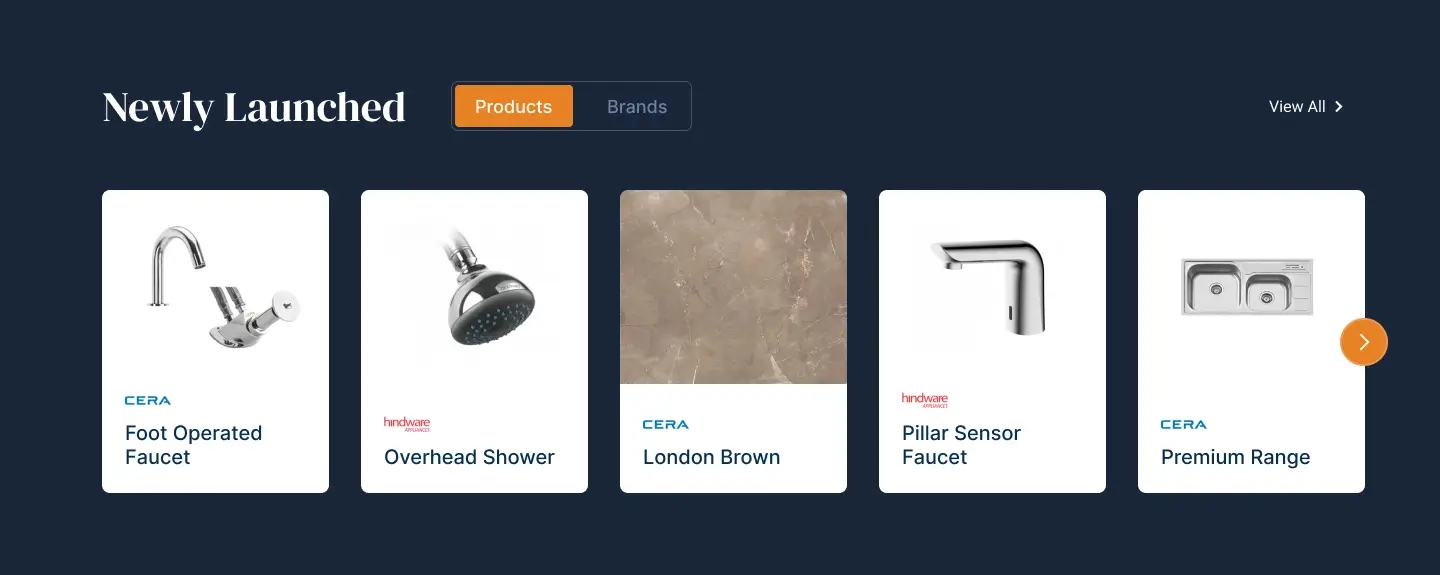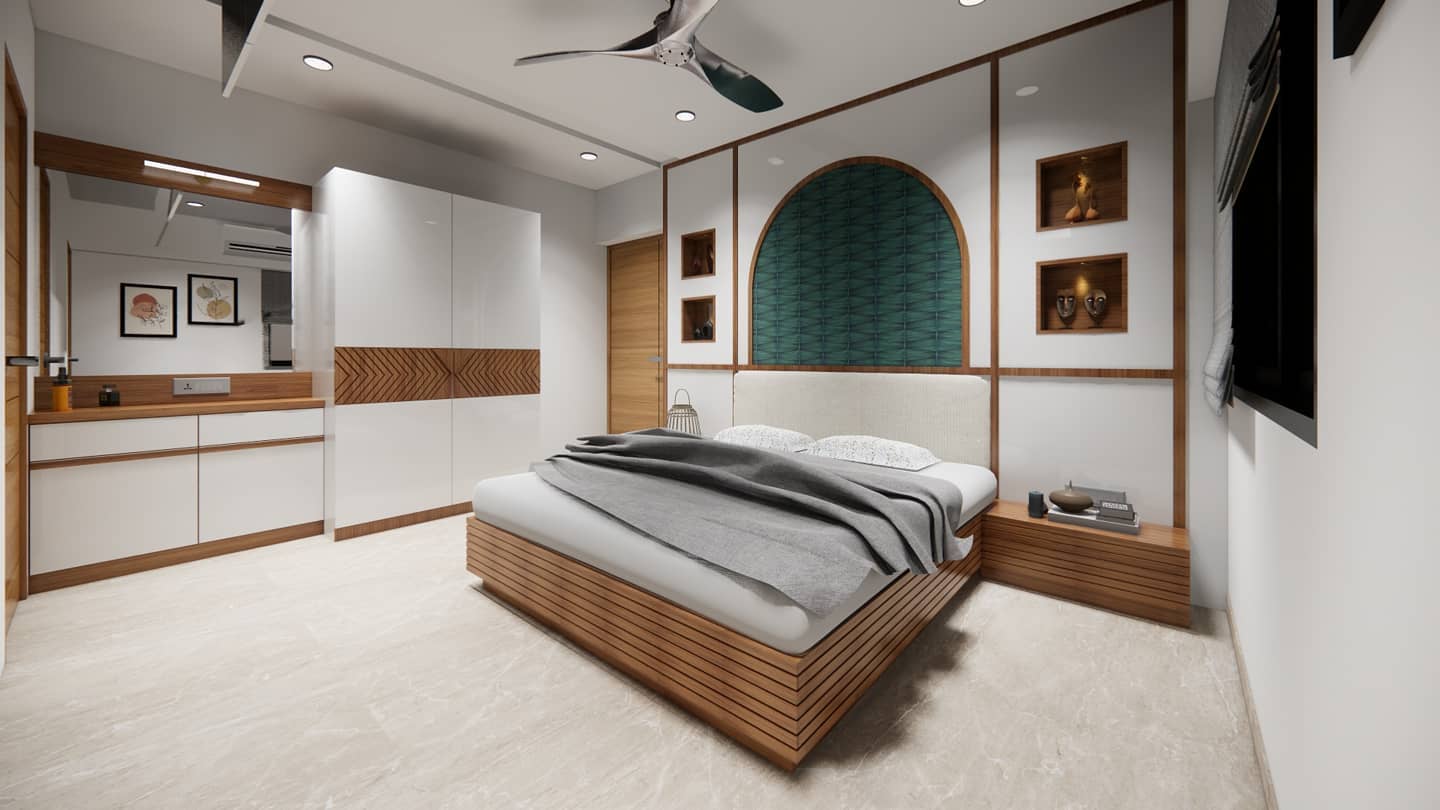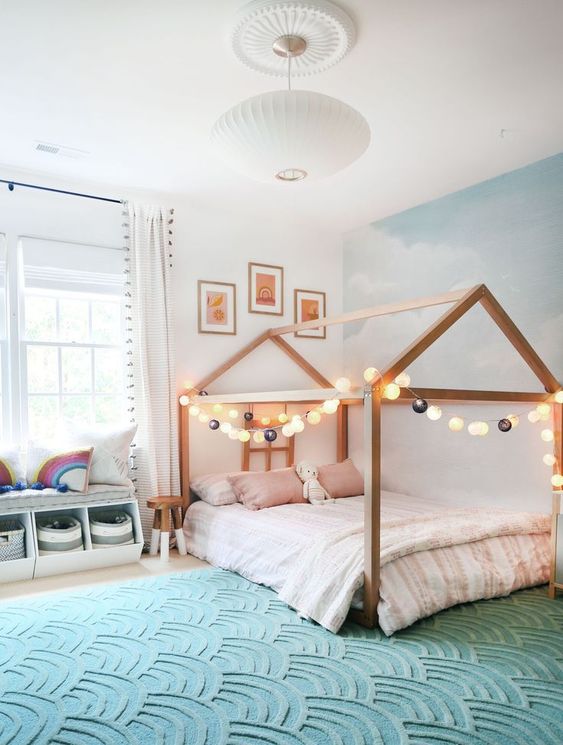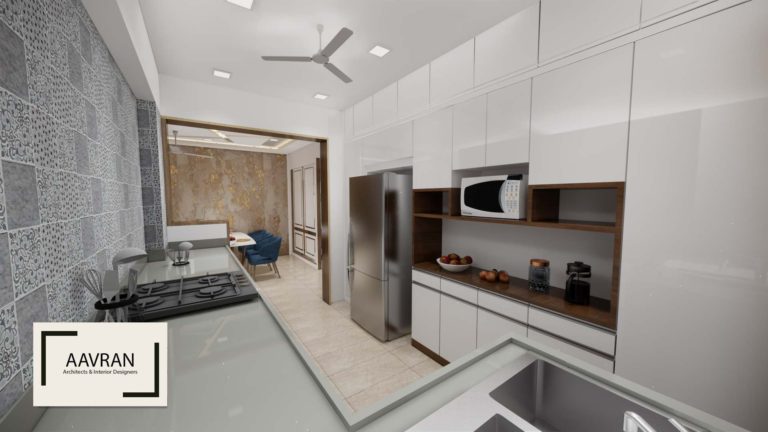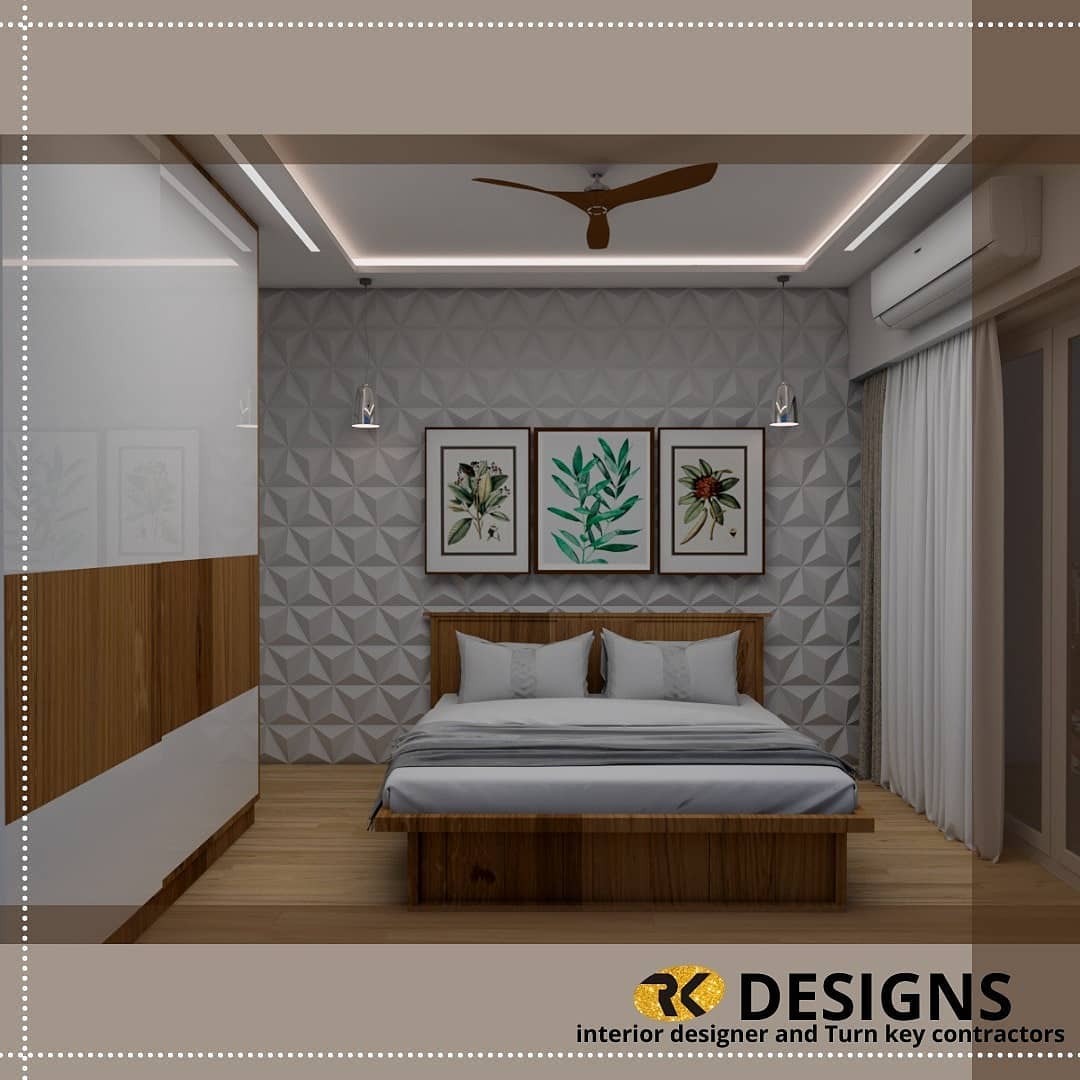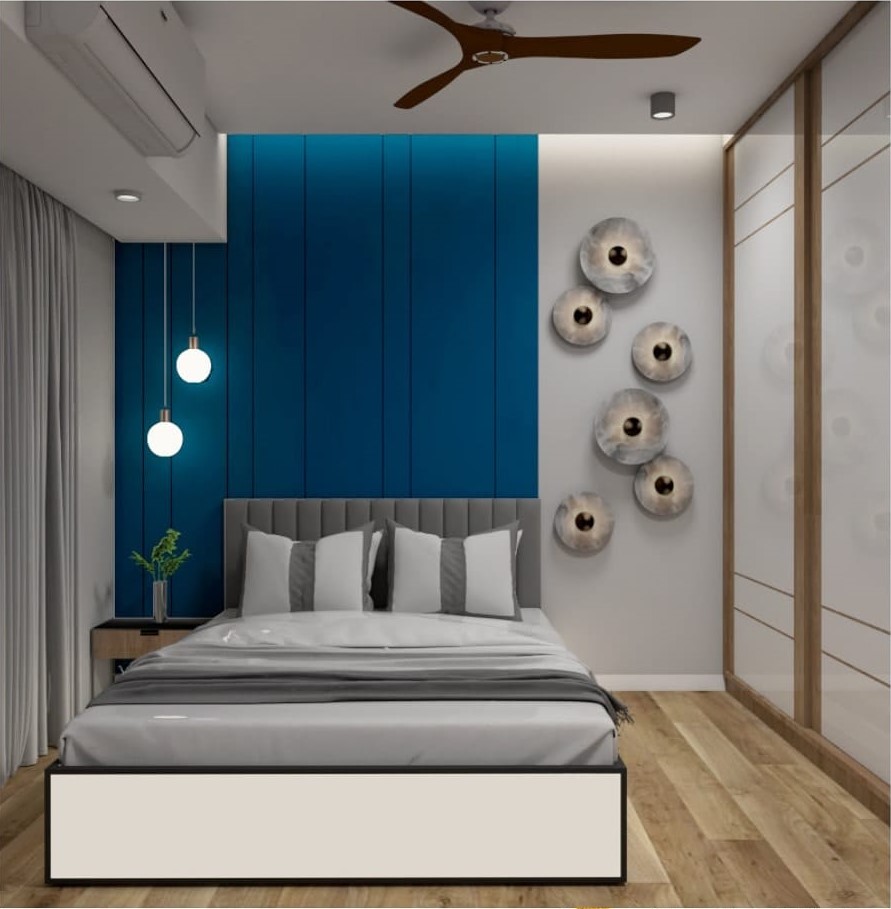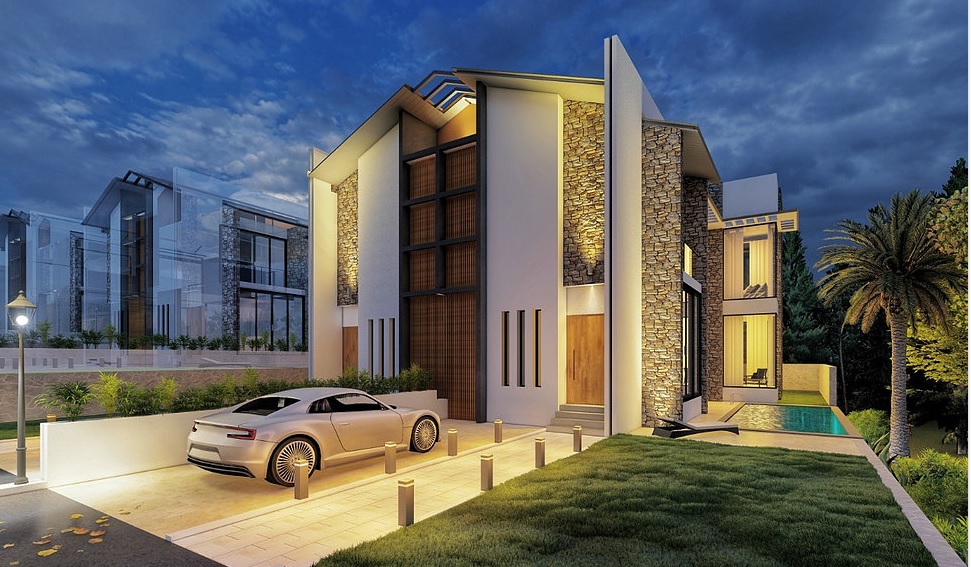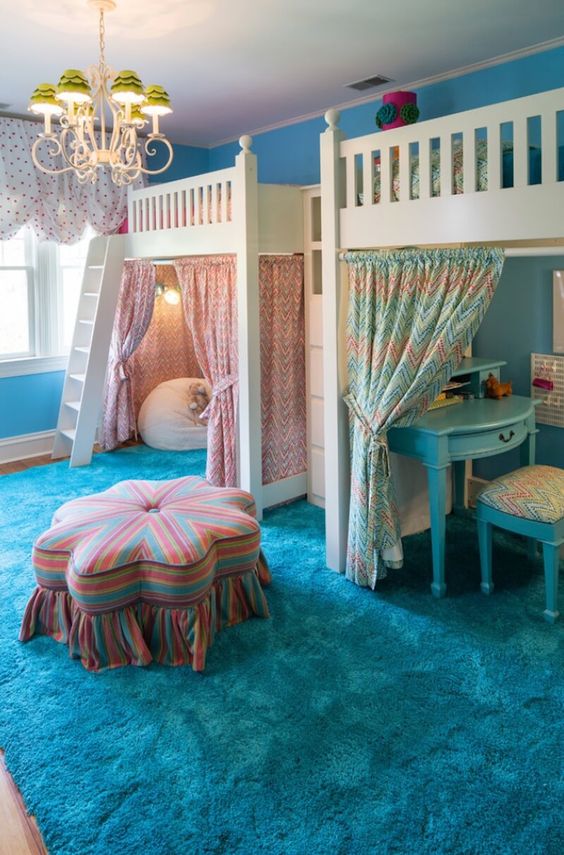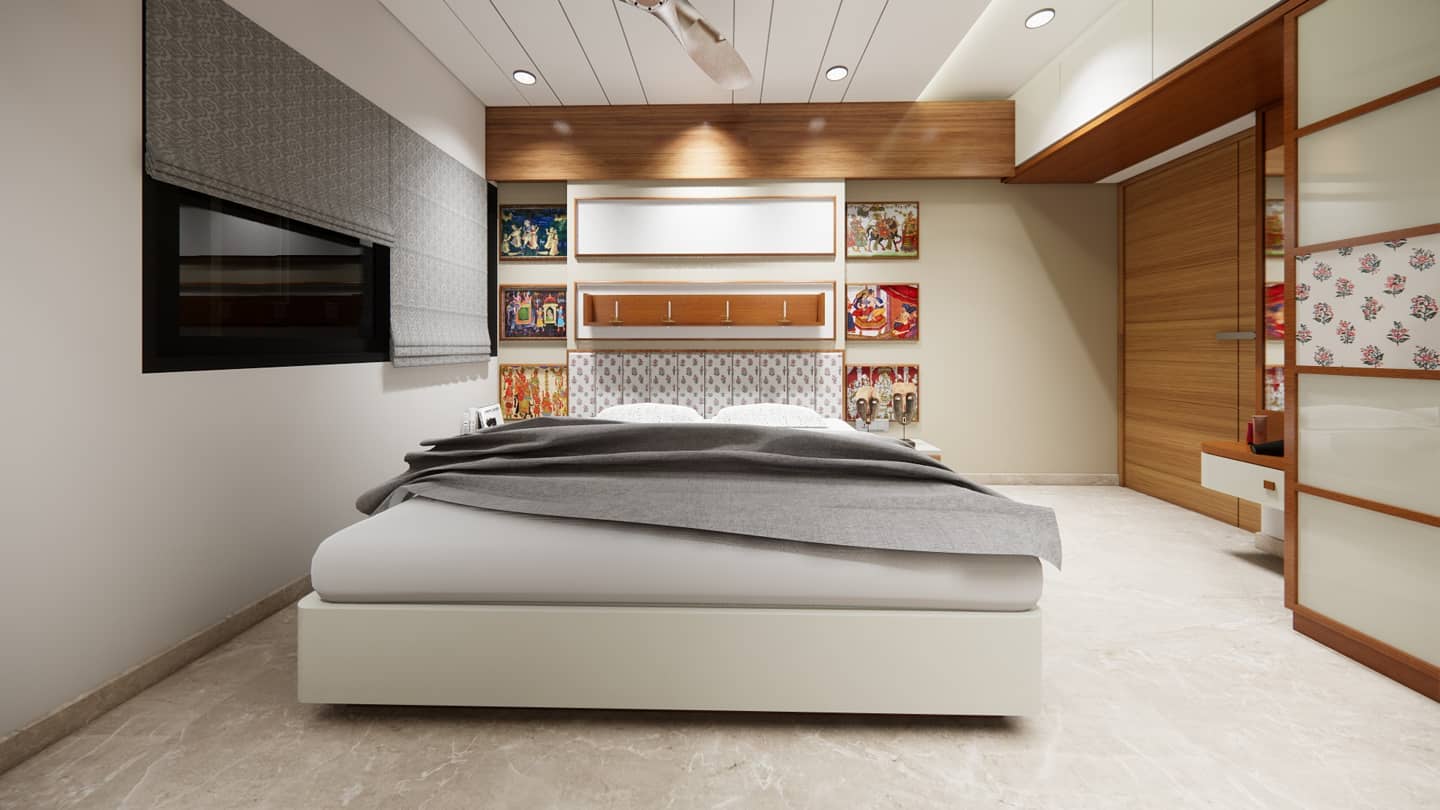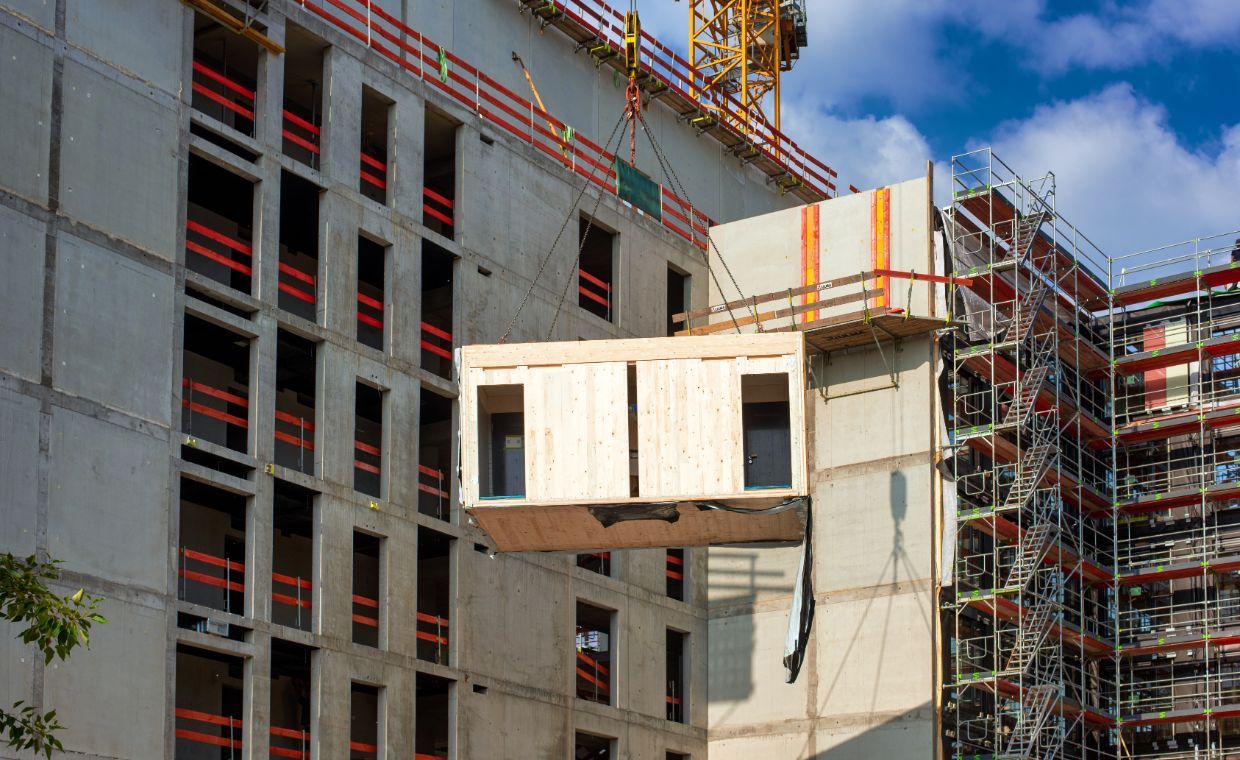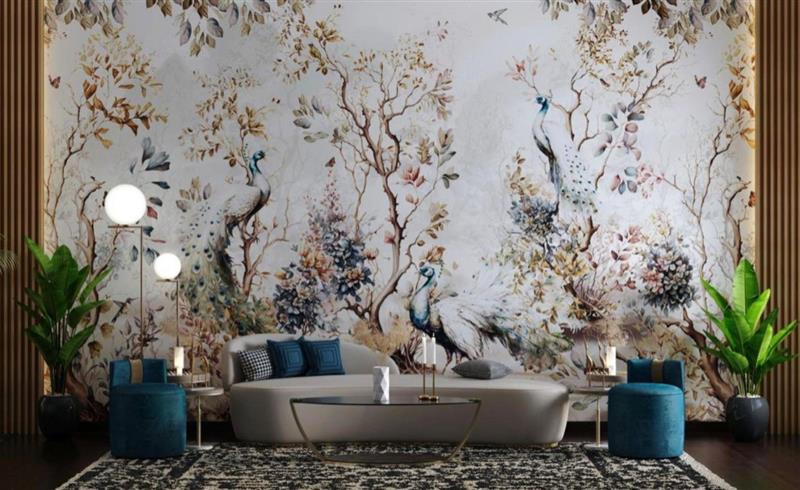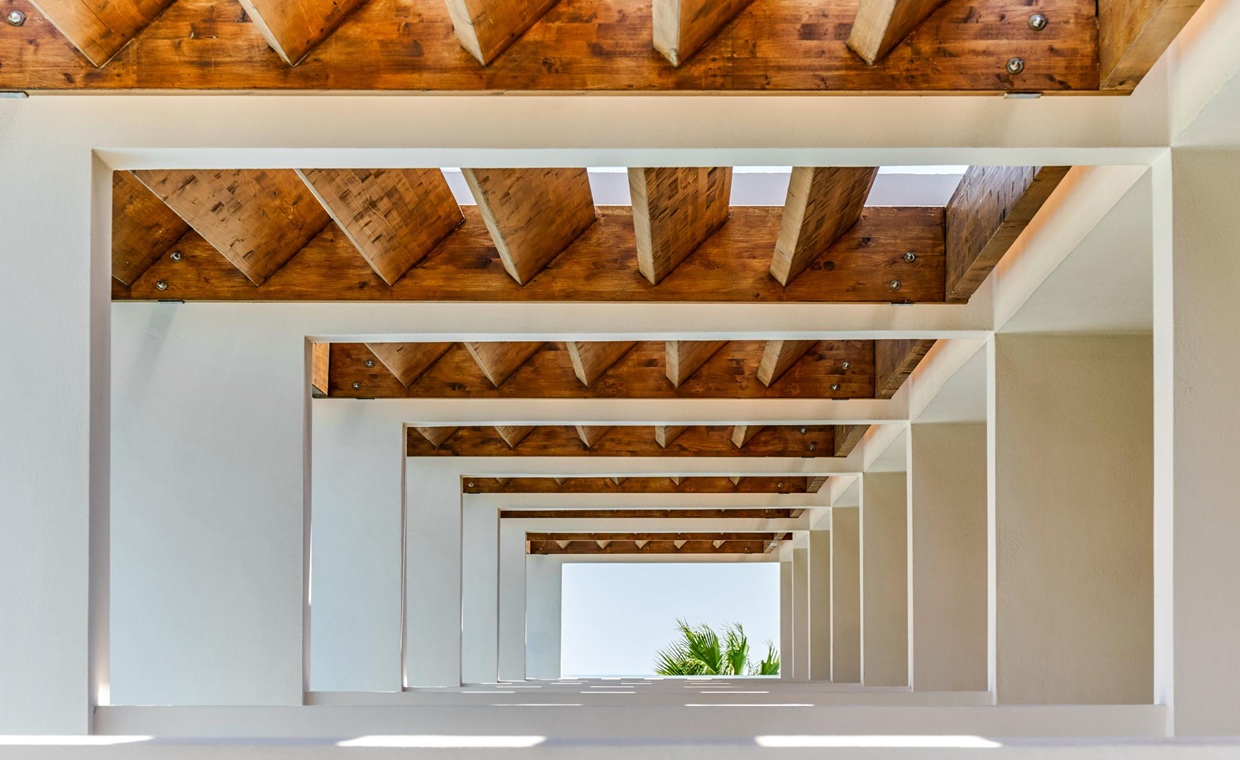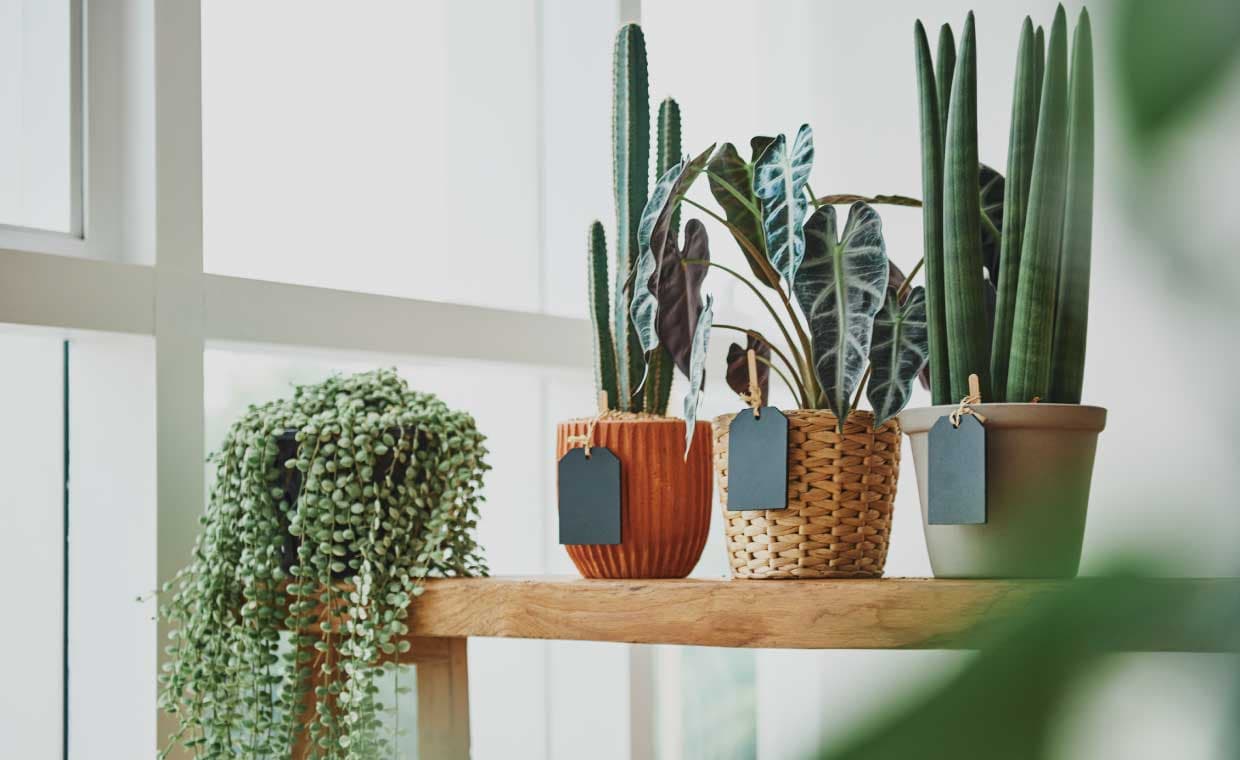
Table of Contents
Are you a desert lover? Do you adore cactus houseplants or need low-water indoor plants that thrive with minimal care? Then this article is for you.
Desert-inspired decor can evoke the same nostalgic charm as an arid desert landscape. Indoor desert plants not only add a unique charm but also require very little maintenance.
There are several ways to bring a rustic desert vibe into your space. Even a small cactus can add warmth and character.
Read on to discover the best cactus houseplants and decor elements to create a stunning desert aesthetic.
Considerations for Desert Landscaping

You need to consider several things while designing a desert garden. Before incorporating indoor desert plants into your space, consider:
- The soil type in your home
- The hard zones
- Natural light conditions
- Wind directions
Desert plants grow well in extreme conditions, which include hot days and cold nights. Still, you can grow many of them indoors, to bring a desert touch to your home.
10 Best Indoor Desert Plants for a Rustic Aesthetic
While low-water indoor plants require minimal maintenance, they still need plenty of sunlight. Supplementary lighting from the north-facing windows can even be sufficient. The following indoor desert plants are excellent options to include in your home:
1. Echeveria

Echeverias are charming succulents known for their rosette shape and vibrant colours, resembling flowers. They thrive in bright sunlight and require minimal watering. Proper Echeveria care involves providing at least 4-6 hours of bright sunlight, well-draining soil, and minimal watering to keep this vibrant succulent healthy and thriving. These plants are excellent for adding a pop of colour to any indoor space. Echeverias are low-maintenance, making them perfect for busy plant enthusiasts. Their thick leaves and stems allow them to store water efficiently, making them drought-tolerant.
Common Name – Echeveria
Plant Type – Succulent
Planting Season –Spring
Size – 5-70cm tall, 5-30cm wide
Maintenance – Low
Light – Minimum 4-5 hours of bright sunlight. The ideal is 6 hours daily.
Water – ½ to 1 cup of water every 7-10 days during the growing season, depending upon the size of the plant.
Colour – Mainly – Blue-Grey, Grey-Green. Rarely – Purple, Green.
2. Aloe Vera

Aloe vera is one of the best indoor desert plants and even has medicinal properties. They are even edible and have digestive benefits. It is also called ‘Lily of the Desert’ and ‘Plant of Immortality’ in Egypt. They can live up to 25 years if cared for properly. However, make sure your pets do not consume the plant because it may cause side effects.
Aloe vera indoor plants have succulent leaves filled with a gel-like substance that offers various health benefits, including soothing sunburns and promoting digestion. However, it’s essential to avoid overwatering and ensure proper drainage to prevent root rot.
Common Name – Aloe vera
Plant Type – Succulent
Planting Season – June-July, and September-October
Size – 60-100cm tall
Maintenance – Low
Light – Minimum 6 hours of daylight.
Water – Once every 2 weeks.
Colour – Pale-Green, Grey-Green.
3. African Milk Tree

Courtesy - Pintrest
African milk tree, or “Cathedral Plant,” is one of the easy-growing cacti. If maintained properly, they can live up to a decade. They required proper drainage along with watering. Their small leaves grow between the thorns of the stem. The leaves of the Rubra variety are reddish-purple. “African Milk Tree” may refer to the milky sap some species produce.
These house plants are relatively low-maintenance but need occasional watering, especially during the growing season. With proper care, African milk trees can live for many years, adding architectural interest to indoor spaces with their unique appearance.
Common Name – African Milk Tree
Plant Type – Succulent
Planting Season – June-July
Size – 91-152cm tall, 45-90cm wide.
Maintenance – Low
Light – Minimum 6 hours of daily sunlight
Water – While the plant is continuously growing in the summer, increase watering; check the moisture of the soil once a week. Water only when the top inch of soil feels dry to the touch in the winter.
Colour – Green, Red.
4. Prickly Pear Cactus

The prickly pear cactus is one of the common indoor desert plants. They are easy to grow and bear small fruit as well, called cactus pears or prickly pears in English and “tuna” in Spanish. The fruit is highly rich in vitamin C and tastes a lot like a mixture of watermelon and raspberry. After removing the skin and spines of the cactus, its pads are edible and can be used in salads and tacos.
These cacti thrive in bright sunlight and well-draining soil. While they require minimal water, it’s crucial to avoid overwatering, as they are susceptible to root rot. For tips on how to grow prickly pear cactus indoors, be sure to follow best practices to keep your plant thriving. This plant needs 4-6 hours of direct sunlight and requires watering every 2-3 weeks, making it an ideal low-water indoor plant. Prickly pear cacti make excellent additions to desert-themed gardens or as decorative accents in homes, thanks to their striking appearance and occasional blooms.
Common Name – Prickly Pear or Pear Cactus
Plant Type – Succulent
Planting Season – September-December
Size – 15-30cm tall, 45cm wide
Maintenance – Moderate
Light – 4-6 hours of direct sunlight during the summer.
Water – Every 2-3 weeks. Water only when the soil is too dry.
Colour – Red, Wine-red, Green, Yellow-Green
5. Coral Cactus

Courtesy - Pinterest
It’s a unique type of cactus to have in your house. The wavy fan is grafted onto the top of another plant, giving it the appearance of underwater coral. It has a tall, green stem with crinkled leaves that resemble cabbages, giving it the appearance of a vast coral reef.
This plant is highly toxic. Its sap can cause skin irritation, and all parts of the plant are poisonous if ingested. Keep it away from children and pets. Despite its toxicity, the coral cactus adds a touch of elegance to indoor spaces with its sculptural form and vibrant colours.
Common Name – Coral Cactus
Plant Type – Succulent
Planting Season –Spring and Summer
Size – 30-60cm tall
Maintenance – Moderate
Light – 3-5 hours of sunlight daily
Water – It shouldn’t be allowed to dry out completely, but overly wet soil must also be avoided, as the roots are prone to rot. Let the top 5-10cm dry. 16 to 29 °C is the optimum range for growth.
Flower Colour – Pink, Purple
6. Christmas Cactus

They have smooth but slightly segmented leaves with soft, round spines. Christmas cactus care is simple, making it a favourite among indoor gardeners. Filtered light with moderate irrigation is best for these cacti. When exposed to the cooler climate, the plants rebloom. Christmas cacti are relatively low-maintenance and make beautiful additions to hanging baskets or tabletop displays.
Common Name – Christmas Cactus
Plant Type – Succulent
Planting Season – Late winter or early summer
Size – 15-30cm tall, 30-60cm wide
Maintenance – Moderate
Light – Indirect light and humid conditions; it is best to grow in an east- or north-facing window.
Water – Every 2-3 weeks, when the top 1/3rd of the soil feels dry.
Colour – Pink, Red, Orange, White, Scarlet, Gold, and Cream
7. Angel wings Cactus

The angel wing cactus is one of the most popular indoor desert plants and belongs to the prickly pear family. They grow in an evenly spaced cluster of hair, unlike the sharp spines. Proper pruning is required to keep the plant at a uniform size. When provided with adequate sunlight, this cactus produces edible red fruits, adding both aesthetic and culinary value to indoor spaces.
Common Name – Angel wings cactus, Bunny ear cactus, Polka dot cactus
Plant Type – Succulent
Planting Season – Early spring
Size – 60-90cm tall
Maintenance – Low
Light – Full sun in summer
Water – Once every 2-3 weeks
Colour – Pale yellow
8. Saguaro Cactus

These are large plants that can live for centuries if taken care of well. Its flowering can take up to 40 years. As the plant grows slowly, it can be used as an indoor desert plant for several years. They require a lot of light and sparse watering. Saguaro cacti add a dramatic focal point to indoor spaces, evoking the rugged beauty of the desert landscape.
Common Name – Saguaro
Plant Type – Columnar cacti
Planting Season – Mid-May to Late-June and Early-July
Size – 38-40cm tall
Maintenance – Moderate
Light – 10-14 hours of sunlight daily
Water – 25cm of watering annually, i.e., every 10-14 days
Color – Yellow-centred white
9. Old-lady Cactus

The old-lady cactus is a typical cactus-type plant that grows in small colonies. They have hairy spines with pink halos atop their heads. It is planted in a sandy mix and watered once every week during the summer and monthly in the winter. Old-lady cactus may describe the fuzzy appearance resembling an elderly person’s hair.
Common Name – Old-lady Cactus
Plant Type – Succulent
Planting Season – Late spring, early summer
Size – 25cm tall, 50cm wide
Maintenance – Moderate
Light – 4-6 hours of daily sunlight
Water – Once every week in summer and once every month in winter
Colour – Purple-red flower with fuzzy white hair-like spines
Also Read: Indoor Plants At Home – Six Spaces That You Can Utilize And How?
10. Barrel Cactus

The barrel cactus is a classic indoor desert plant that requires 6 hours of sunlight daily and minimal watering. The barrel cactus has a long, rigid spine that protects its juicy, edible pulp. When cared for properly, they can survive for decades. It grows in a loose, sandy mix of soil.
Common Name – Barrel Cactus
Plant Type – Succulent
Planting Season – Early summer
Size – 60-120cm tall; 45-76cm wide.
Maintenance – Low
Light – 6 hours of sunlight daily
Water – Once every week in summer and once between December and February during winter
Colour – Dark Green, shades of Grey and Blue
5 Decor Tips to get the Rugged Desert Vibe in your Home
1. Create a Sculptural Centerpiece

To give a rugged desert vibe to your home, try having a sculptural centerpiece. It can be an art installation, a lavish seating space, or even a fireplace.
If you are opting for a fireplace, then make sure that it is well-lit and comfortable. It should have a decent and relaxing appeal. Don’t over-decorate the space. Keep it simple and elegant.
Make sure that the sculptural centerpiece is the main attraction in your room. Check for the colour theme and size of the centerpiece before installing it in your room.
For thoughtful plant styling that enhances each room’s aesthetics and energy, refer to expert guides on cactus placement tips for indoor styling byEmily L. Hay Hinsdale author of the book, ‘Never Put a Cactus in the Bathroom
A Room-by-Room Guide to Styling and Caring for Your Houseplants.’
2. Go for Pops of Colour

Colours can bring positivity and happiness to your room. You can opt for vibrant colours, artwork, and decorative elements if you want to create a focal point in your room.
Create a centerpiece out of a collection of favourite items to enhance the space. Planters can be used to create green space. Use vibrant cacti, like the Christmas cactus, eucalyptus, barrel cactus or prickly pear cactus, to add warmth to your space. Use light colours and minimal furniture. Don’t overdo the space. Keep it simple and cool.
Also Read: 9 Summer Home Decor Ideas To Beat The Heat
3. Choose a Warm Colour Palette

Warm, neutral tones are eye-soothing. They make the space calmer and give off a desert vibe as well.
“While I’m definitely one for decorating with colour because it can be fun and exciting, I do believe that neutral spaces promote the calmest, sanctuary-like vibes,” says the creative director and founder of House of Bohn, Karin Bohn.
Light and warm colours like cream, beige, off-white, taupe, etc., when blended with a simple texture, provide one of the best desert decors.
4. Textural Furnishings

Textural furnishings are among the best ways to make a room look desert-like. Add soft textiles to your decors, such as cable knits, velvet, and suede, to create a comfortable atmosphere.
A room seems comfortable when it has floor-pooling drapes, oversized cushions, and loose slipcovers.
“Rugs, throw pillows, and blankets get well-worn over time, so making a coordinated effort to switch them out all at once helps a space feel polished and cohesive, sending signals of satisfaction to the brain,” says Murray, Interior Style Manager at Soho Home (Better Homes & Gardens, 2023).
Also Read: 15+ Minimalistic Interior Decoration with Cactus and Succulents
Let’s Confine to Cactus!
The icing on the desert-inspired contemporary home will be the desert houseplants.
Some of the world’s most adaptable and robust plants are those found in deserts. Many of these plants may be cultivated indoors with a little extra care, although they may flourish best in hot, dry areas. After reading this blog article, we hope you are eager to consider your alternatives.
FAQs Related to Indoor Desert Plants
1. What Kind of Plants Do Well in The Desert?
Low-maintenance plants are good for deserts. The desert plants are generally succulent and do not need much water but require a plethora of sunlight to grow. Their leaves are thick and have spines all over to save water from evaporation.
The clear distinction between stem and leaf is absent in these plants. Some of the common examples are Aloe vera, Ferocactus, Bursera fagoroides, Gossypium harkensii, Barrel cactus, Coral Cactus, etc.
2. What Is the Most Popular Desert Plant?
The desert plants are unique in their own ways. They can survive extreme climatic conditions and live with minimum water requirements. They are tough, rough, and spiny, yet beautiful.
Some of the most popular desert plants are the elephant tree, coral cactus, prickly pear cactus, saguaro cactus, orange pipe cactus, desert marigold, desert willow tree, barrel cactus, desert lily, angel wing cactus, African milk tree, etc.
3. Are There Any Houseplants That Don’t Like Humidity?
Houseplants that don’t like humidity can survive in dry air. They are tolerant of extreme climates. Continuous watering is also not required. They need minimum maintenance.
Some of the desert houseplants that can grow in minimal humidity are Jade Plant (Crassula ovata), Snake Plant (Dracaena trifasciata), Aloe Vera, String of Pearls (Senecio rowleyanus), Heartleaf Philodendron (Philodendron hederaceum), Saguaro (Carnegiea gigantea), etc.
4. Are Succulents Desert Plants?
The succulent plants can store water in their thick, fleshy tissues. They generally have no clear distinction between their leaves and stems. Some plants store water in their stems, and some in their leaves. They can tolerate the extreme weather of deserts; thus, they are mostly found in deserts.
Some examples of succulent desert plants are Echeveria, African milk tree, Angel wing cactus, Old lady cactus, Christmas cactus, Coral cactus, etc.
5. Is Aloe Vera A Desert Plant?
Aloe vera, being a semi-tropical plant, can grow in deserts. They are adapted to low water conditions; thus, they have thick, fleshy leaves to store water. It does not need much maintenance and can survive in extreme climates. They have thick leaf cuticles covered with wax to protect the water from evaporation. The distinction between its leaves and stem is not clear.
6. What Is the Most Drought-Resistant Plant?
The deserts have the most extreme climates and can even face drought situations. The drought-resistant plants need to be tolerant and succulent to hold water for a longer period.
Some of the most common drought-resistant plants are catmint, Agastache, Lantana, Coneflower, Salvia, Veronica, Yarrow, California poppy, Artemisia, Licorice plant, Russian sage, Lavender, Portulaca, Bougainvillea, Aloe vera, Snake plant, etc.
7. What Plant Can Withstand the Most Heat?
Succulent plants, with thick, fleshy leaves to store water, are good at withstanding heat. They have spines to restrict evaporation from their leaves and stems.
The heat-resistant plants need to be tolerant to bear the harsh sunlight throughout the day. Some of the common types of heat-resisting plants are Lemon Verbena, Lantana, Cosmos, Geranium, Marigold, Sedum, Salvia, etc.
Also Read:
Mastering Indoor Gardening: A Comprehensive Guide for Beginners
13 Unique Interior Design Ideas and Home Decor Inspirations
References
Emily L. Hay Hinsdale. (2021) Never Put a Cactus in the Bathroom: A Room-by-Room Guide to Styling and Caring for Your Houseplants [Online] US, S&S/Simon Element. Available from: https://www.google.co.in/books/edition/Never_Put_a_Cactus_in_the_Bathroom/p7QjEAAAQBAJ?hl=en&gbpv=1
Better Homes & Gardens, 2023. 15 Soothing Decor Ideas to Help You Relax and Unwind at Home. [online] Available at: https://www.bhg.com/decorating/lessons/basics/home-decorating-ideas-to-create-a-soothing-environment/
Author Bio
Saili Sawantt – She is an Architect and Interior Designer by profession. Writing is what she treats as her passion. She has worked as an Architectural Writer, Editor, and Journalist for various design as well as digital portals, both national and international. Formerly she has also worked with Godrej Properties Limited (GPL) Design Studio, Mumbai, due to her keen interested in learning about Sustainability and Green buildings. Apart from this, she runs her blog ‘The Reader’s Express’ and is a practicing Architect & Interior Designer.



